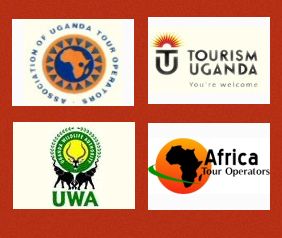The mountain gorilla population has increased in the Virunga and Bwindi massif and provides hope for increased revenue for Uganda and Rwanda Tours and Safari Travel Industry
The number of mountain gorillas, a critically endangered species, has increased by more than 26% in one of the two locations of Virunga national park and Bwindi impenetrable forest national park famous for gorilla tracking safaris where they exist in the wild, according to a new survey released this year 2010
The survey, partially funded by World Wildlife Fund (WWF), found that the number of mountain gorillas in the Virunga Massif region – which spans Democratic Republic of Congo (DRC), Rwanda and Uganda – has increased from 380 to 480 individuals since 2003. The census, which was conducted in March and April of this year, indicates that there are a total of 480 mountain gorillas in 36 groups along with 14 solitary silverback males. Along with the 302 mountain gorillas safaris counted in 2006 in Bwindi Impenetrable National Park in Uganda safaris – the only other location where mountain gorillas exist in the wild – and four orphaned mountain gorillas in a sanctuary in DRC, the total known world population is 786 individuals. This represents an annual growth of 3.7% over the past seven years.
The mountain gorilla population has made an absolutely remarkable recovery. We are very pleased to see yet another increase in the numbers of this critically endangered species,” said Dr. Allard Blom, Director of the Congo Basin region at WWF. “This very unique collaboration between all three countries to protect a single species is a great example of how transboundary conservation can work well.”
Six teams comprised of 72 people from DRC, Rwanda and Uganda systematically walked over 620 miles throughout the entire range during the census and meticulously documented fresh signs of mountain gorilla groups. Genetic analysis of fecal samples collected during the census have identified and corrected for any double-counting of individuals or groups, ensuring the most accurate estimate for the population.
Fecal samples were also collected for a comprehensive health screen of the population. Such monitoring is vitally important in understanding the long-term viability and measuring the effects of the recent history of conflict in the region on such a small population of critically endangered animals. Further details and results of the health screen, population structure, genetic composition, mountain gorilla distribution, population dynamics, and human disturbance will be available when the full report is complete in 2011.
“These astonishing findings were only made possible through the good will of surrounding communities and the hard work and dedication of the rangers who have worked to protect the gorillas, many of whom have lost their lives,” said Matt Lewis, Senior Program Officer specializing in African species conservation at WWF. “WWF will continue to provide the International Gorilla Conservation Program with the support it needs to protect mountain gorillas as conflict and deforestation continue to be serious threats.”
The 2010 Virunga Massif mountain gorilla census was conducted by the protected area authorities in the three countries: l’Institut Congolais pour la Conservation de la Nature, the Rwanda Development Board and the Uganda Wildlife Authority. The census was supported by the International Gorilla Conservation Programme (a coalition of WWF, African Wildlife Foundation, and Fauna & Flora International), the Max Planck Institute for Evolutionary Anthropology, the Dian Fossey Gorilla Fund – International and the Mountain Gorilla Veterinary Project. The census was funded by WWF, Fair Play Foundation, and the Netherlands Directorate General for International Cooperation (DGIS) through the Greater Virunga Transboundary Collaboration.
By Fred Bukenya

